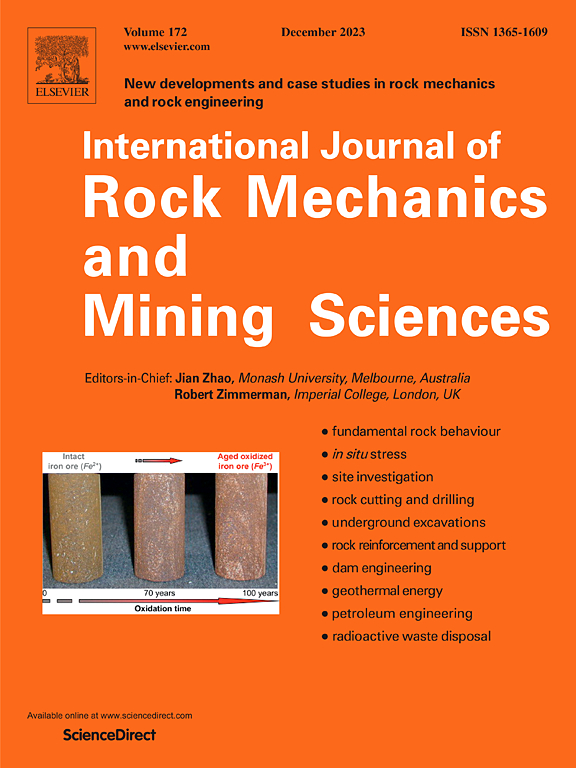岩洞和隧道顶板稳定性:极限状态塑性分析重述
IF 7
1区 工程技术
Q1 ENGINEERING, GEOLOGICAL
International Journal of Rock Mechanics and Mining Sciences
Pub Date : 2025-02-01
DOI:10.1016/j.ijrmms.2024.106008
引用次数: 0
摘要
以往对连续岩体中深部巷道顶板稳定性分析的观察表明,顶板的临界破坏机制涉及分析中使用的破坏包络线的π/2旋转。在本研究中,利用极限分析的运动学方法和极限平衡方法得到的结果表明,在物理空间中顶板坍塌的破坏剖面相当于应力平面中旋转和缩放的抗剪强度包络线。提出了一种采用参数表达式的解析技术,可以直接准确地解释广义Hoek-Brown准则,而不需要了解其封闭形式的抗剪强度包络或用近似函数代替它。由于刚块平移机制的存在,两种独立方法(即纯上界方法和小上界方法)得到的解是相同的。此外,通过检查应力状态和破坏机制,遵循静力平衡和运动相容,研究了早期顶板坍塌力学的几个有趣方面。所提出的方法克服了在这一类别中进行的传统研究的局限性。本文章由计算机程序翻译,如有差异,请以英文原文为准。
Roof stability for rock cavities and tunnels: Revisiting limit state plastic analysis
Previous observations of the roof stability analyses for deep-depth tunnels in continuum rock mass suggest that the critical roof failure mechanism involves a π/2-rotation of the failure envelope utilized in the analysis. In this study, the results obtained from the kinematic approach of the limit analysis and limit equilibrium method demonstrated that the failure profile of a roof collapse in a physical space is equivalent to the rotated and scaled shear strength envelope in the stress plane. An analytical technique employing parametric expressions is presented to account directly and accurately for the generalized Hoek–Brown criterion without requiring knowledge of its closed-form shear strength envelope or replacing it with approximated functions. The solutions obtained from the two independent methods, that is, the pure and lesser forms of the upper-bound approach, were identical owing to the rigid-block translational mechanism. In addition, several interesting aspects of the mechanics of incipient roof collapse are investigated by inspecting the stress state and failure mechanism in compliance with static force equilibrium and kinematic compatibility. The proposed method overcomes the limitations of conventional studies conducted in this category.
求助全文
通过发布文献求助,成功后即可免费获取论文全文。
去求助
来源期刊
CiteScore
14.00
自引率
5.60%
发文量
196
审稿时长
18 weeks
期刊介绍:
The International Journal of Rock Mechanics and Mining Sciences focuses on original research, new developments, site measurements, and case studies within the fields of rock mechanics and rock engineering. Serving as an international platform, it showcases high-quality papers addressing rock mechanics and the application of its principles and techniques in mining and civil engineering projects situated on or within rock masses. These projects encompass a wide range, including slopes, open-pit mines, quarries, shafts, tunnels, caverns, underground mines, metro systems, dams, hydro-electric stations, geothermal energy, petroleum engineering, and radioactive waste disposal. The journal welcomes submissions on various topics, with particular interest in theoretical advancements, analytical and numerical methods, rock testing, site investigation, and case studies.

 求助内容:
求助内容: 应助结果提醒方式:
应助结果提醒方式:


